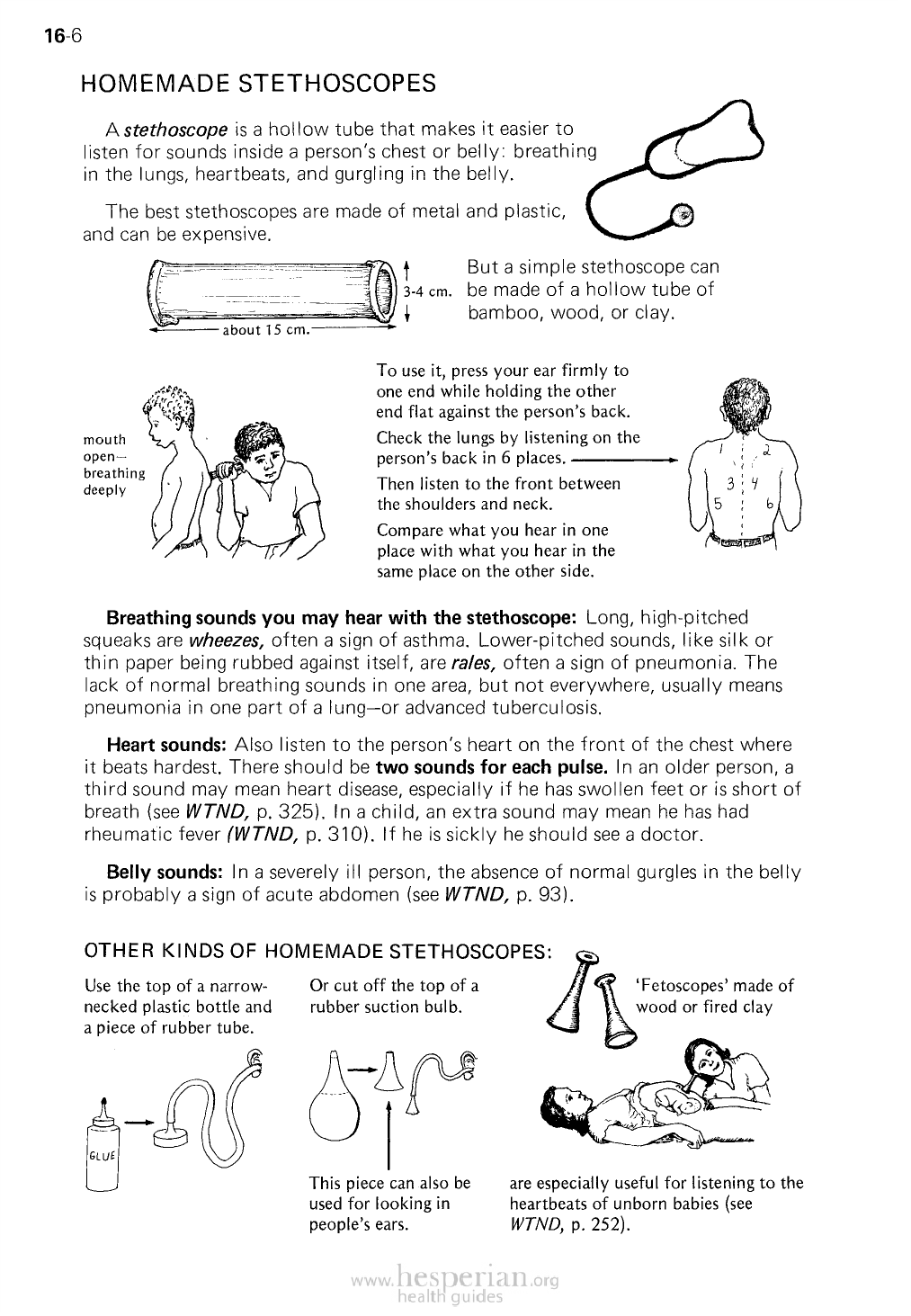
16-6
HOMEMADE STETHOSCOPES
A stethoscope is a hollow tube that makes it easier to
listen for sounds inside a person’s chest or belly: breathing in
the lungs, heartbeats, and gurgling in the belly.
The besl stethoscopes are made of metal and plastic,
andean be expensive.
about 15 cm.
But a simple stethoscope can
3-4 cm. be made of a hollow tube of
bamboo, wood, or clay.
mouth
open-
breathing
deeply
To use it, press your ear firmly to one
end while holding the other end flat
again>t the person’s back.
Check the lungs by listening on the
person’s back in 6 places.
Then listen to the front between the
shoulders and neck.
Compare what you hear in one
place with what you hear in the
same place on the other side.
Breathing sounds you may hear with the stethoscope: Long, high-pitched
squeaks are wheezes, often a sign of asthma. Lower-pitched sounds, like silk or
thin paper being rubbed against itself, are rales, often a sign of pneumonia. The
lack of normal breathing sounds in one area, but not everywhere, usually means
pneumonia in one part of a lung—or advanced tuberculosis.
Heart sounds: Also listen to the person’s heart on the front of the chest where
it beats hardest. There should be two sounds for each pulse. In an older person,
a third sound may mean heart disease, especially if he has swollen feet or is short
of breath (see WTND, p. 325). In a child, an extra sound may mean he has had
rheumatic fever (WTND, p. 310). If he is sickly he should see a doctor.
Belly sounds: In a severely III person, the absence of normal gurgles in the belly
is probably a sign of acute abdomen (see WTND, p. 93).
OTHER KINDS OF HOMEMADE STETHOSCOPES:
Use the top of a narrow-
necked plastic bottle and
a piece of rubber tube.
Or cut off the top of a
rubber suction bulb.
‘Fetoscopes’ made of
wood or fired clay
This piece can also
be used for looking in
people’s ears.
are especially useful for listening to
the heartbeats of unborn babies (see
WTND, p. 252).